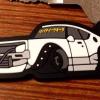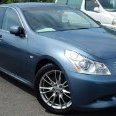Nissan: Base Model Gt-r Does 7:29 At Nurburgring
Announcements
-
Similar Content
-
Latest Posts
-
Oooohhh man did not bloody know that, that's amazing thanks heaps for sharing mate, bookmarked it!
-
By soviet_merlin · Posted
In case you haven't come across it, there's also https://nissan.epc-data.com/ Go by VIN or drill down into your specific model and year and it'll have references for pretty much all the OEM parts. In very similar diagrams. Linked against amayama as well for ordering. Though they can be a bit slow and can be better to search around to get the parts locally. -
Just in case anyone finds this in the future, here's a diagram sent to me by Nissan to identify these hoses. I ended up finding them through EFI Solutions though because Nissan reckons they need to order it from Japan, with a total cost of approx $110 inc. So it as cheaper with EFI anyway. https://www.efisolutions.com.au/blow-by-hose-rb25det-r33-wc34-c34-c35 https://www.efisolutions.com.au/blow-by-rocker-cover-hose-rb25-r33-wc34-c34-c35
-
This is an older post of mine but I just thought I should update it and explain what the problem was. Long story short the friction plates were below their service limit. New they are around 4mm, and service limit is (according to OSG) 3.5mm In addition the crank seal gasket wasn't sealing 100% anymore and that led to an oily clutch. Not sure what came first and why the clutch was worn after just 10,000km .. but all good now. OSG refresh kit via Nengun
-
My r34 GTT auto transmission is slowly letting go, slipping every now and again, tiptronic deciding to not keep it in 1st / 2nd when flooring it, taking longer to shift so I’m going going flush it and replace the filter and hope it lasts a bit longer. I’ve got 10L of Penrite ATF FS at home and I’m going to use it for it unless ye completely recommend against it. Penrite list it as compatible. i understand I should be using Castro Transzmax however it’s quite expensive and I already have 10L of the ATF fs. Has anyone here used atf fs for there got or heard of anyone? Or am I silly for even considering anything other then Castrol Thanks for your advice
-








Recommended Posts
Create an account or sign in to comment
You need to be a member in order to leave a comment
Create an account
Sign up for a new account in our community. It's easy!
Register a new accountSign in
Already have an account? Sign in here.
Sign In Now